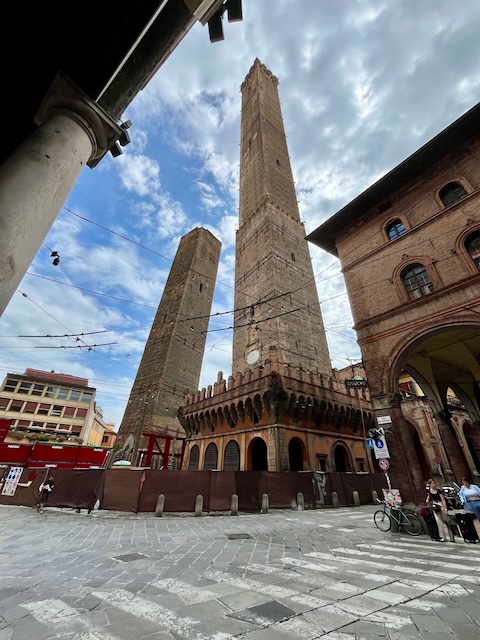The inspiration for this adventure kicked off with F1 in Imola (see that entry here). Bologna is the nearest largely populated city to the circuit in Imola- making it an easy choice for our stay. It is the capital city of the Emilia-Romagna region in Northern Italy. This region is well-known for its food production (Parmigiano Reggiano cheese, balsamic vinegar, Prosciutto di Parma, wine, tortellini, mortadella, and so much more) and also automobile production (home of Ferrari, Lamborghini, Maserati, and more). It didn’t take much to convince me I would enjoy this visit – based on its gastronomy alone.
Bologna is often referred to as “La Dotta, la Grassa, e la Rossa” (The Learned, the Fat, and the Red). The Learned – represents the city is the home of the Western world’s oldest university with history beginning in 1088. La Grassa – represents the exquisite cuisine and gastronomic heritage. La Rossa – is in reference to the red hued teracotta rooftops and historically left leaning politics.
We essentially stayed 8 nights in Bologna, and we opted to stay near the main train/transit station – Bologna Centrale. This served us well – as we essentially also made day trips from our home base to Imola, Modena and Florence, too. (Modena and Florence will get their own posts soon.) Our hotel was straightforward and seemed to generally be business traveler oriented. The woman at reception was so fantastic on our arrival. I suspect we were probably the last reservation to check in (as it was VERY LATE), and she greeted us by name. She smartly deduced we were there for “Formula Uno”, and gave us some great directions on getting to the train and walking from the Imola station to the track. She also gave us a map and quick orientation to where we were and in relation to most of the central/major attractions.
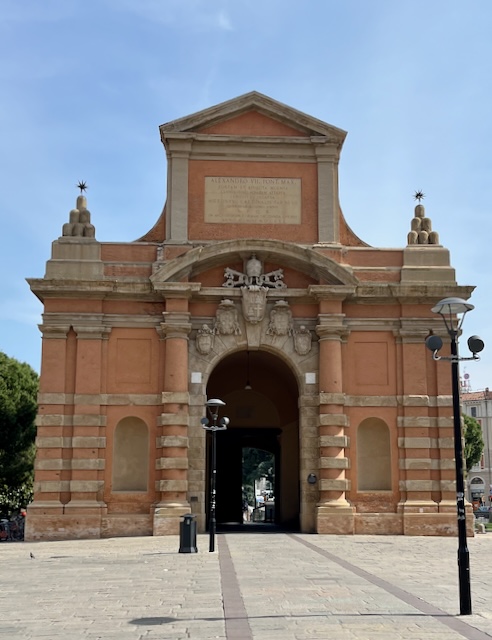
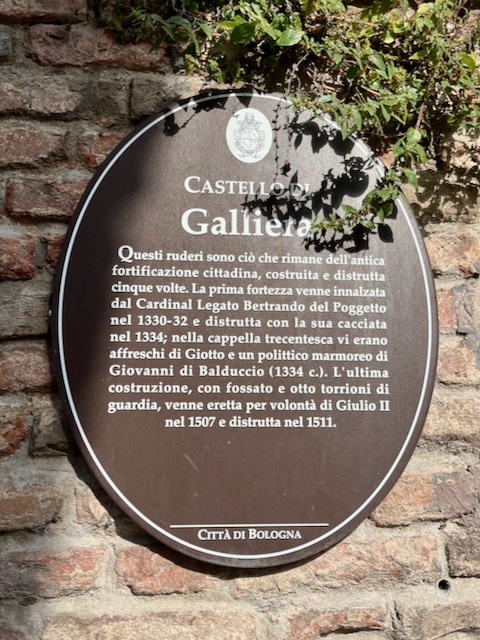
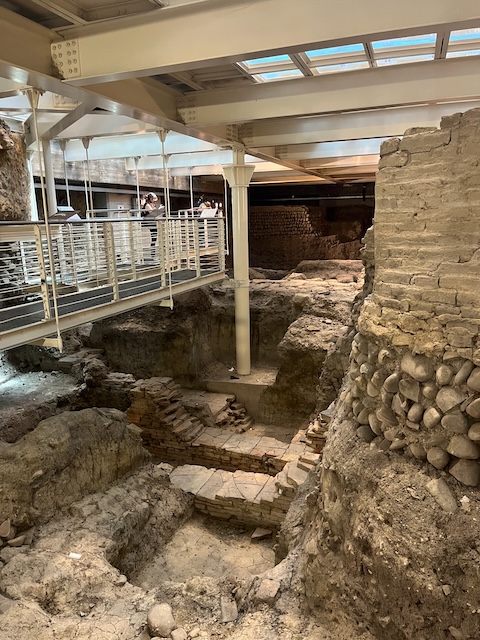
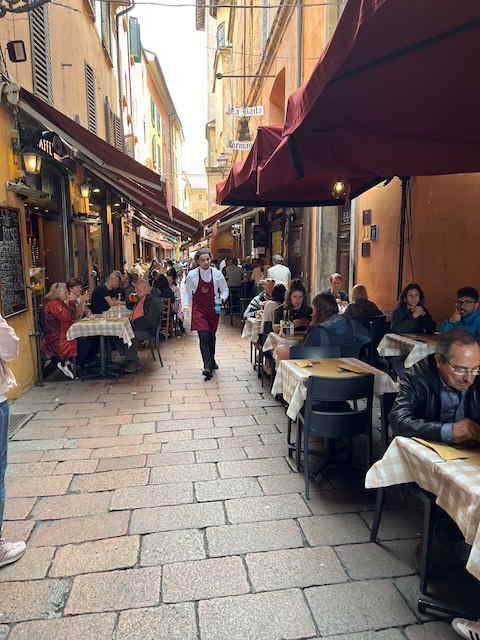
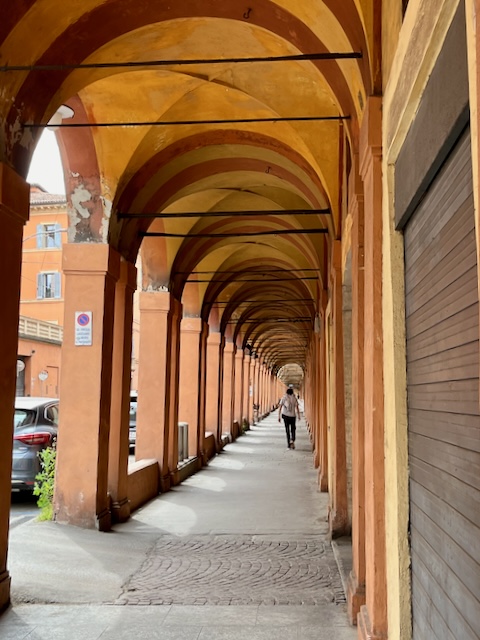
I loved that just outside our hotel was Porta Galliera, an old gate/portal that was once part of the city’s medieval outer wall. Best I can tell- the old gate was originally constructed in the 14th century, completely rebuilt in the 17th century and has seen many restorations and improvements through the years. Just a short distance away from the gate – you can also find some ruins of an ancient castle – Castello di Galliera or Rocca di Galliera. It was built close to the gate and former outer city walls by the papal government. It was also destroyed five times by the population in rebellion against the papal government.
Just across Via dell’Indipendenza from our hotel you can see the steps leading up to Parco della Montagnola. This park is the oldest in the city – and it sits on an artificial plateau created by debris from the ruins of the 14th century Castello di Galliera. The park’s current layout is the direct result of a redesign ordered by Napoleon.
At our home base for this adventure, we were certainly in the midst of history rich places. The city center and famous Piazza Maggiore were about a 20 minute walk south down Via Indipendenza. This historic square was originally established around 1200 and was the first square to be built after the fall of the Roman empire. There’s lots to see in the central area – like the large clock tower, Neptune Fountain, Basilica di San Petronio, Le Due Torre (two ancient medieval leaning towers – Asinelli and Garisenda), Quadrilatero (all the gourmet vendors and cafés), and Biblioteca Salaborsa (the city’s library and a spot to view some ancient underground Roman ruins).
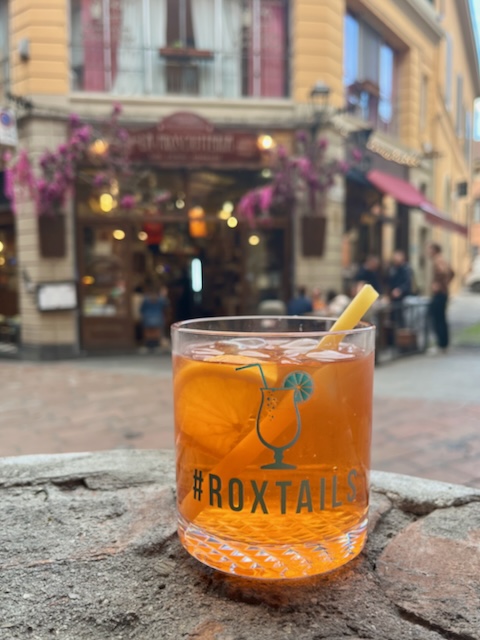
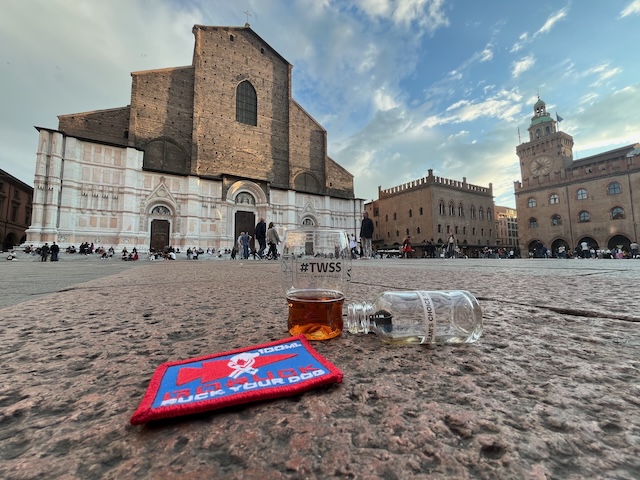
Most of our time in Bologna was spent walking, taking in the sites, and eating. As I started writing this Bologna blog, I realized I would again need to break things up. So, here are the links for separate posts on these some other Bologna visit topics:
- Porticos of Bologna
- Food Talk & Places we ate
- Side Quests (cuz I’m not really sure I’d simply call it “shopping”)
Discover more from The Rox Life
Subscribe to get the latest posts sent to your email.
